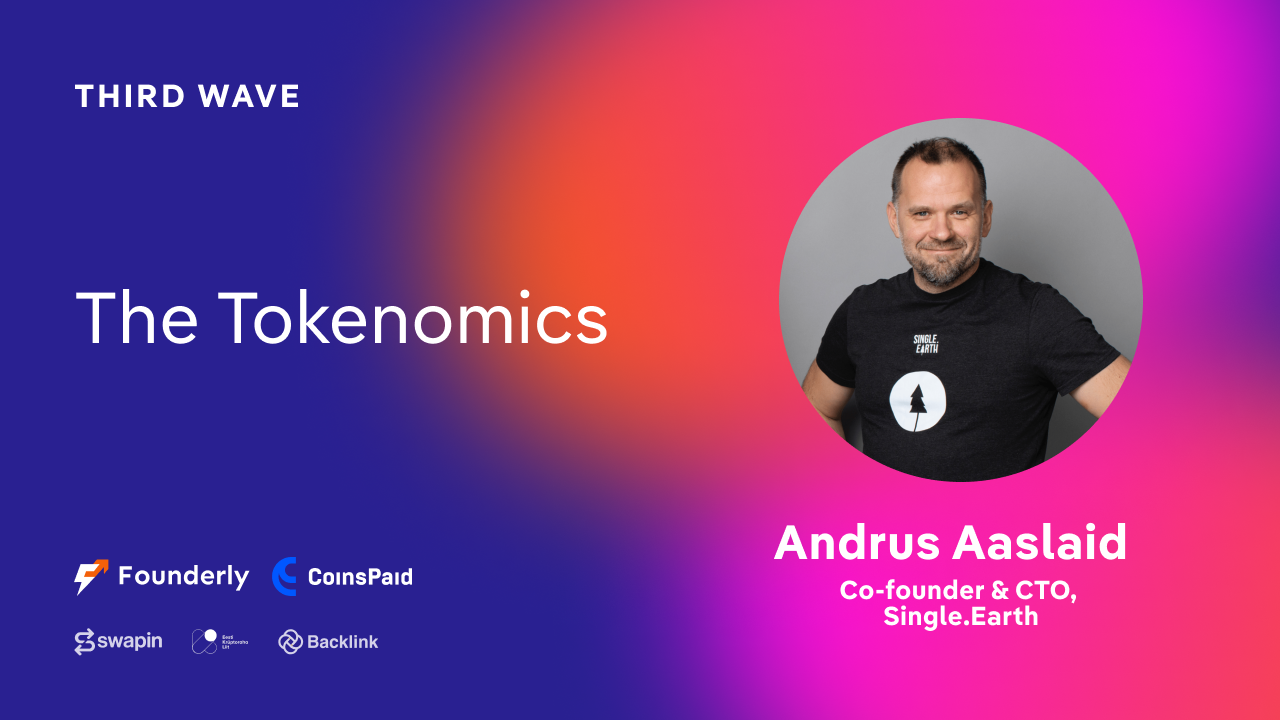CTO of Single.Earth brings us closer to the world of Tokenomics

Andrus Aaslaid, Co-founder and CTO of Single.Earth provided some key insights on the function of Tokenomics and its impact on modern society as a part of Founderly’s Third Wave Web3 program.
How To Create a Token Economy
Andrus explains to us some basic vocabulary that is needed to understand Tokenomics. This begins with the so-called utility token. This is a token that represents access to a certain value and is able to generate profit without an established market value. It is not to be confused with asset-backed tokens and stablecoins.
Staking
Andrus introduced us to many actions within Tokenomics. One of them is the so-called “staking”. This means locking up your assets to achieve validator status in a blockchain network. A blockchain is simply a block of data, also called a check-up of data. The numbers in these data sets uniquely represent the data block. To form a chain there are simply other blocks added later. Andrus showed us a short sample of this functionality. In this explanation, there is at first a bank balance of 10 Euros. This is put as information in a block. There it changes to 11 Euros. Another block is created that contains 11 Euros. With each newly added block, the block contains a check-sum of data records.
This is now a unique design. Blockchains are a string of blocks, interlinked with one another and added through the ledger. Of course, a synchronisation mechanism is needed there.
For this purpose, there are validators and a network. They copy the same chain of networks. This is paid work, provided by servers and their owners.
Now, how can you become a validator? In order to become the validator, some money is used and saved to get credibility. When transactions happen, it’s counted and in the best case recognised as legible. The validator now receives some payment for this process. This is called staking.
Bonding
Another process within Tokenomics is “bonding”, a method that determines the token price algorithmically by its supply. The higher the demand, the higher the price. Also of use, there is the AMM, an Automated market maker. It is usable only at decentralised Exchanges. It is a great instrument to fight market volatility.
Token Governance
Andrus also shared his beliefs in the governance token. This is a special form of the utility token, that represents the ownership in a decentralised protocol or organisation. Governance tokens give holders the ability to influence decisions affecting the core protocol, product or feature roadmap, hiring and staffing, and changes to governance parameters.
This paves the way for DAO, companies whose organisation is all in a computer form - everything works automatically.
Why we need Tokenomics
Tokenomics are the rules that define a crypto asset's monetary policy. It ranges from the issuance to the "destruction" of tokens if any. They use game theory to create incentives to reward good actors and punish bad actors. Tokenomics also define the role the token plays in the ecosystem and how it gains value.
Tokenomics are necessary because public blockchains are open to everyone, including bad actors. Tokenomics align the behaviour of individual actors, strengthen the protocol and ultimately build trust. This is done with the help of cryptocurrencies. An increase in good behaviour is reflected in an increase in the value of a crypto asset, which encourages participants to be good actors.
In a well-designed tokenomics model, all costs and benefits are internalised (no externalities), so there is no way to manipulate the ecosystem - which ultimately makes it robust.
All blockchain projects involve four different actors. These are the founders and developers who build the project, the miners or validators who run the blockchain and ensure security, the investors who provide the capital needed for the project, and finally the consumers as the actual users of the platform. Tokenomics creates a set of rules that aligns all actors and strengthens the ecosystem.